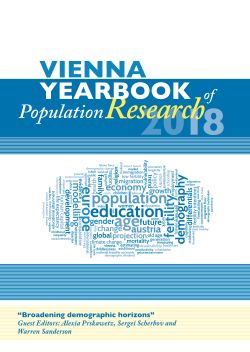
Vienna Yearbook of Population Research 2018, pp. 135-162, 2018/11/21
Broadening demographic horizons

In this paper, we develop a multistate projection model that allows the Australian Aboriginal and Torres Strait Islander (Indigenous) population to move between area classifications and Indigenous self-identification statuses. We combine data from the Australian Census Longitudinal Dataset and the 2011 census to estimate the transitions between 2006 and 2011. This information is then included in a multistate population projection model to illustrate the effects of migration and identification change over time in relation to natural increase (i.e., births–deaths). The results show how patterns of identification change differ by both age and type of migration, and how migration and identification change affect patterns of Indigenous population change across major cities, regional areas, and remote areas in Australia.